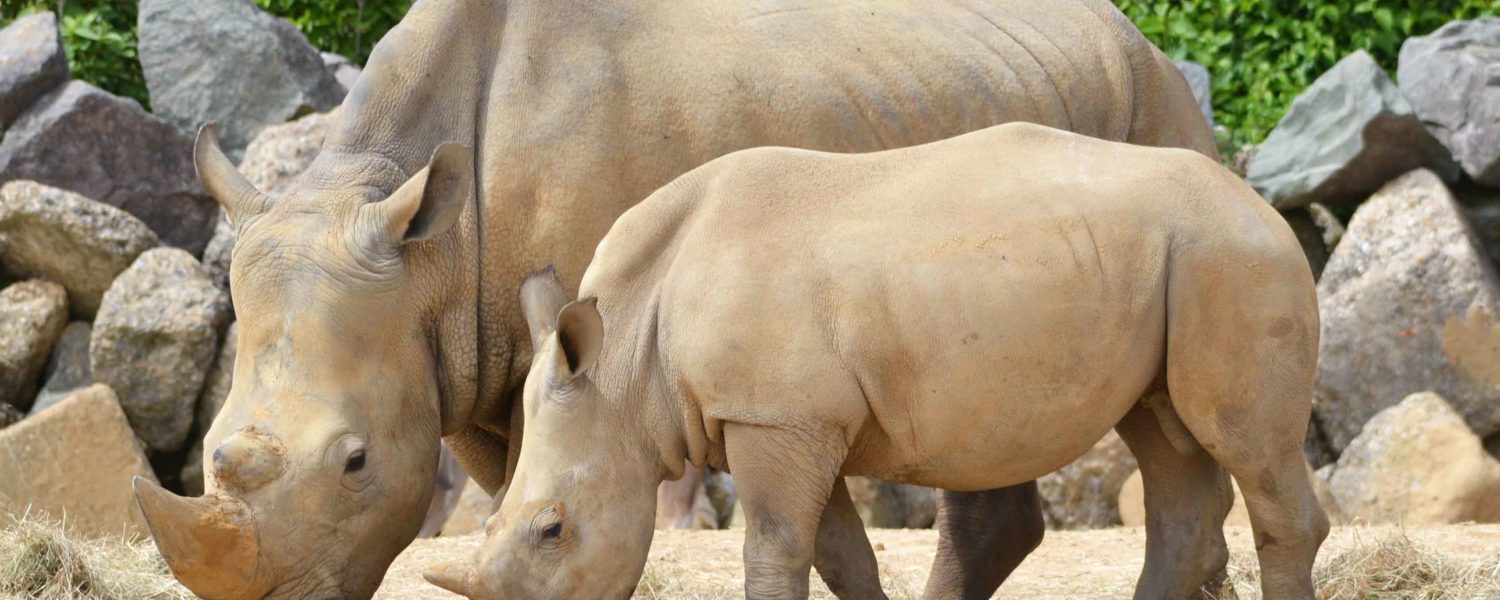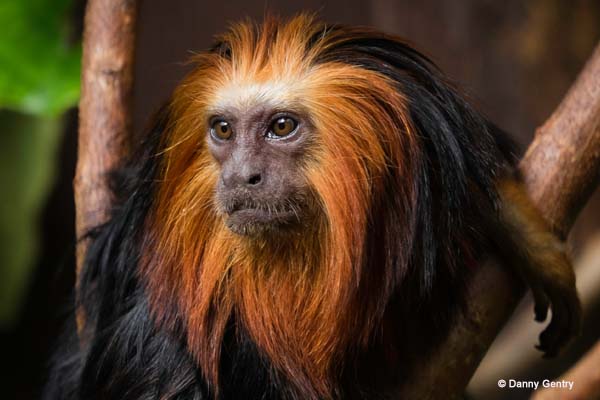Ex Situ Breeding programmes
Colchester Zoo has 240 different species; many of these are classified as threatened, endangered or critically endangered in the wild. There are many species at Colchester which are part of either the European Endangered Species Programme (EEP) or the European Studbook (ESB). Our zoological management team are committee members for a number of these breeding programmes.
Clive Barwick, Curator:
- Co-chair BIAZA elephant focus group
- Committee member for the Amur leopard EEP
- Committee member for the African hunting dog EEP
- Committee member for the Giant anteater EEP
- Committee member for the Rhinoceros hornbill EEP
- Committee member for the Common squirrel monkey EEP
- Committee member for the Red panda EEP
- Committee member for the Humboldt penguin EEP
- Committee member for the African elephant EEP
- Committee member for the Komodo dragon EEP
- Committee member of the Yellow-breasted capuchin EEP
- Committee member of the Coppery titi monkey EEP
- Committee member of the Pied tamarin EEP
- ESB coordinator for Malayan Sun Bear
Sarah Forsyth, Curator:
- BIAZA Council member
- IUCN/SSC Otters in Zoos Taskforce Group member
- Co-chair EAZA Group on Zoo Animal Contraception
- Contraceptive advisor to the Prosimian TAG
- ESB coordinator for Patas monkeys
- EAZA Monitor for Smooth Coated, Spotted-necked, North American Rover and Sea Otter
- Committee member for the Black & White Ruffed Lemur EEP
- Committee member for the Amur & Sumatran Tiger EEP
- Committee member for the Cheetah EEP
- Committee member for the Red River hog EEP
- Committee member for the White Rhino EEP
- Committee member for the Pygmy Hippo EEP
- Committee member for the Andean Condor EEP
- Committee member for the Moluccan Cockatoo EEP
- Committee member for the L’hoest monkey EEP
- Committee member for the Gelada Baboon EEP
- Committee member for the Mandrill EEP
- Committee member for the Ruppell’s vulture EEP
- Committee member of Spotted Hyena EEP
- Committee member and Sub-group Chair for Management guidelines for Giraffe EEP
European Endangered Species Programme (EEP)
EEPs are the most intensive form of population management. Each EEP has a coordinator who is assisted by a species committee. The coordinator collects information on the species in all EAZA zoos and aquaria, produces a studbook, carries out demographical and genetical analyses, and produces a plan for the future management of the species. With the assistance of the species committee, recommendations are made each year on which animals should and should not breed and which species should move to another collection.
Mammals (35 EEPs)
- Black & white ruffed lemur (Varecia variegata variegata)
- Red-bellied lemur (Eulemur rubriventer)
- Geoffroy’s marmoset (Callithrix geoffroyi)
- Golden lion tamarin (Leontopithecus rosalia)
- Golden-headed lion tamarin (Leontopithecus chrysomelas)
- Common chimpanzee (Pan troglodytes)
- Pied tamarin (Saguinus bicolor)
- Colombian black spider monkey (Ateles fusciceps robustus)
- Buffy-headed capuchin (Sapajus xanthosternos)
- Common squirrel monkey (Saimiri sciureus)
- L’hoest’s monkey (Cercopithecus lhoesti)
- Mandrill (Mandrillus sphinx)
- Gelada baboon (Theropithecus gelada)
- Visayan warty pig (Sus cebifrons negrinus)
- Orang-utan (Pongo pygmaeus)
- Lion-tailed macaque (Macaca silenus)
- Pileated gibbon (Hylobates pileatus)
- Giant anteater (Myrmecophaga tridactyla)
- African hunting dog (Lycaon pictus)
- Red panda (Ailurus fulgens)
- Amur leopard (Panthera pardus orientalis)
- Amur tiger (Panthera tigris altaica)
- Cheetah (Acinonyx jubatus)
- Red river hog (Potamochoerus porcus)
- African elephant (Loxodonta africana)
- White rhinoceros (Ceratotherium simum)
- Pygmy hippopotamus (Hexaprotodon liberiensis)
- Giraffe (Giraffa camelopardalis)
- Coppery titi monkey (Callcebus Cupreus)
- Binturong (Arctictis binturong)
- Bush dogs (Speothos venaticus)
- Spotted hyena (Crocuta crocuta)
- Fennec fox (Vulpes zerda)
- Ring tailed lemur (Lemur catta)
- Crowned Lemur (Eulemur coronatus)
Reptiles (1 EEP)
- Komodo dragon (Varanus komodoensis)
Birds (6 EEPs)
- Humboldt penguin (Spheniscus humboldti)
- Andean condor (Vultur gryphus)
- Moluccan cockatoo (Cacatua moluccensis)
- Rhinoceros Hornbill (Buceros rhinoceros rhinoceros)
- Ruppell’s vulture (Gyps rueppellii)
- African White backed Vulture (Gyps africanus)
European Studbook Breeding Programme (ESB)
This is a less intensive form of population management. The programme’s studbook keeper collects information on his/her respective ESB species, such as births, deaths and transfers. This information is entered into a computer system so it can then be analysed. This allows the studbook keepers to judge whether a species is doing well or not in EAZA collections, and enables them to decide whether a species needs more rigid management to maintain a healthy population. In this case, the studbook keeper can propose that a species be managed on an EEP programme. EAZA collections can also ask the studbook keeper for recommendations on breeding and transfers.
Mammals (13 ESBs)
- Cherry-crowned mangabey (Cercocebus torquatus torquatus)
- Eastern black and white colobus (Colobus guereza caudatus)
- Linne’s two toed sloth (Choloepus didactylus)
- Southern tamandua (Tamandua tetradactyla)
- Aardvark (Orycteropus afer)
- Patagonian sealion (Otaria byronia)
- Warthog (Phacochoerus africanus)
- Kirk’s dik dik (Madoqua kirkii)
- Greater kudu (Tragelaphus strepsiceros)
- Rock hyrax (Procavia capensis)
- Malayan sun bear (Helarctos malayanus)
- Patas monkey (Erythrocebus patas)
- Visayan spotted deer (Rusa alfredi)
Reptiles (8 ESBs)
- Rhinoceros iguana (Cyclura cornuta)
- Madagascan tree boa (Sanzinia madagascariensis)
- African pancake tortoise (Malacochersus tornieri)
- Giant Asian pond turtle (Heosemys grandis)
- Cuban crocodile (Crocodylus rhombifer)
- Radiated tortoise (Astrochelys radiate)
- Spiny hill turtle (Heosemys spinosa)
- Emerald tree monitor (Varanus prasinus)
Birds (5 ESBs)
- King vulture (Sarcorhamphus papa)
- Eurasian griffon vulture (Gyps fulvus)
- Blue crane (Anthrapoides paradisea)
- Victoria crowned pigeon (Goura Victoria)
- Lesser rhea (Rhea pennata)


